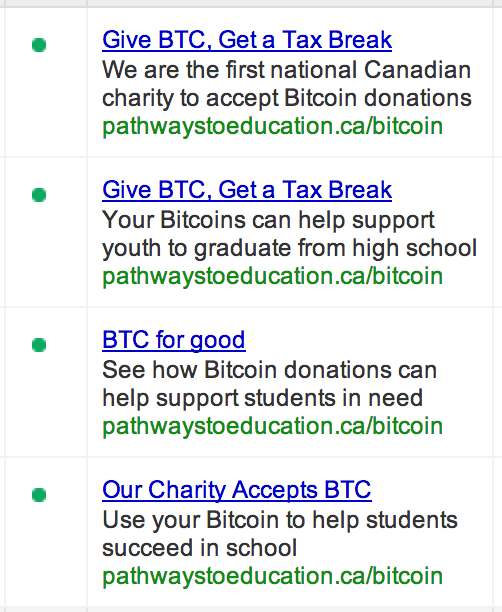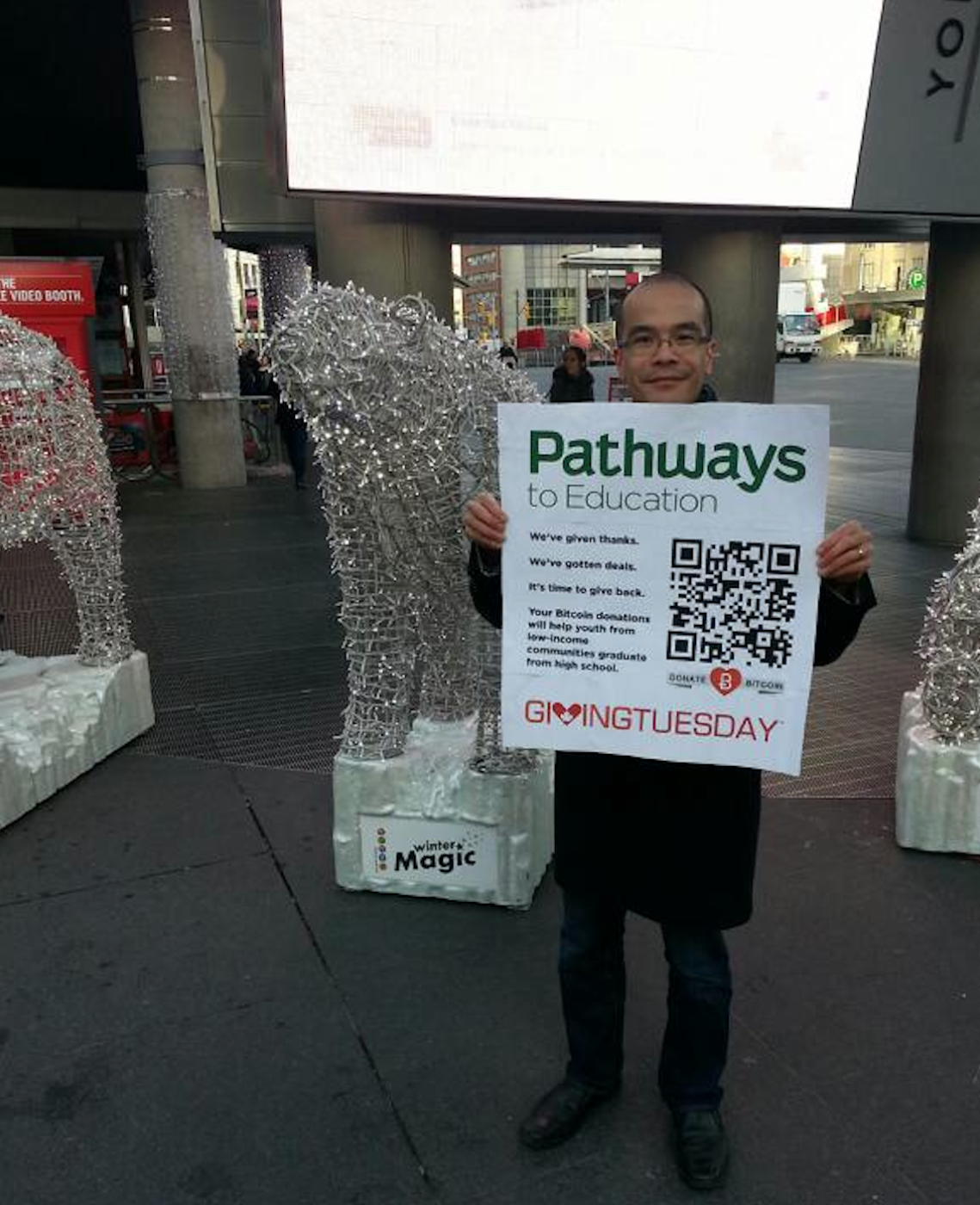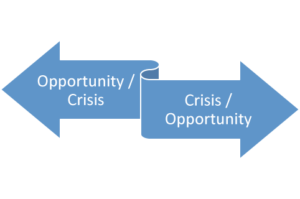Pathways to Education became the first charity in Canada to issue tax receipts for bitcoin donations in November 2013. It has since discovered the risks and rewards of doing so.
“The bitcoin platform and technology is quite innovative and I don’t want to be hyperbolic about it, but it is revolutionary,” says Jason Shim, the charity’s digital media manager.
“The notion of being able to exchange a currency without having a central authority has big implications for how commerce is conducted in general.”
What is Bitcoin and How Does it Work?
Bitcoin is a digital payment network with a universal ledger that people all over the world have access to. When a transaction is made, bitcoin is transferred from one digital wallet into another. This transaction is displayed in the public ledger. User privacy is preserved by displaying a 27-34 character identifier, kind of like an e-mail address.
Transactions are verified by “miners” that are run on computers by members of the bitcoin community. Anyone can become a “miner” and help verify transactions, earning bitcoins while they’re at it. The network functions with a complete consensus among users, creating a strong incentive for all users to preserve its integrity.
A Way to Beat Credit Card Fraud
Fraudsters sometimes use stolen credit card numbers to make donations and seek out refunds. Using the stolen credit card number, scammers issue a complaint that the donation was made for the wrong amount and ask for a portion back. Fraudulent use can take time to discover.
Bitcoin transactions are irreversible, which presents security benefits.
Bitcoin’s irreversibility places the onus on people making transactions to ensure that they do business with people and organizations they trust. Bitcoin technology is sensitive to typos and usually prevents users from sending money to an invalid address by mistake. Once a transaction is made, it usually takes about 10 minutes to verify.
Still, Jason says, it’s important to be careful with bitcoin passwords and have good systems in place.

Pathways to Education used Google AdWords to promote its early adoption of bitcoin donations.
Engaging New Donors
Within the first couple of months of Pathways to Education accepting bitcoin, it received $2,200 USD in bitcoin donations. They put the word out through their website, word of mouth, at local bitcoin events, online forums, marketing partnerships with exchanges, and through Google AdWords.
The people who were donating weren’t their typical donors. Bitcoin opened a window into a new audience — a tech savvy audience that wanted to support the organization, sometimes purely on the grounds that they endorsed the open source currency.
Since bitcoin transactions are decentralized and peer-to-peer, users can avoid having their accounts frozen, pay lower service fees, and don’t have face preconditions to get an account.
“I reached out to people who opted for tax receipts to say, ‘thank you very much, you’re an early adopter in Canada.’ And with the people I heard back from, they were a tech-savvy audience,” Jason says.
One donor didn’t remember where he heard about the Pathways to Education, but said he was interested in the fact that they were accepting bitcoin.
“That was the reason you donated?” Jason asked him. The donor confirmed. He also donated an additional $300 during the holiday season. “That was a really nice surprise we weren’t expecting,” he says.

Pathways to Education is a non-profit organization that began in 2001 as a way to provide supports in low-income communities to overcome barriers spurring high school drop-outs.
Risking Volatile Exchange Rates
Pathways to Education mitigates bitcoin exchange-rate risks by immediately selling donations on an open exchange for Canadian dollars. This helps them avoid bitcoin’s much-in-the-news market volatility. Its value changes frequently and sometimes drastically. In the last year, its value ranged from just over $100 to $1,100 USD.
Some say the fluctuation is a result of the currency’s immaturity and could stabilize with time. The amount of bitcoin in circulation is limited, with new bitcoins created at a predictable and decreasing rate. Since the price of bitcoin is based on supply and demand, it is most stable when demand is in line with this level of inflation.

This chart shows the fluctuating prices over the past year.
Jason recommends charities accepting bitcoin donations treat them the same way they would treat donated stock. Liquidate the amount immediately, assess market value, report it in their records, attribute it to a certain donor, update their balance sheet, and so on. All help mitigate the risks of the bitcoin exchange value.
“The only difference is that sometimes you are dealing with smaller amounts. It’s like dealing with small donations of stock and having to establish a process for that,” Jason says.
Skeptical of Bitcoin? Just like the Internet.
When Jason first approached his colleagues about the potential of bitcoin for the organization, he had to sift through the negative media attention about the digital currency. He put it into perspective by comparing bitcoin to the release of other new technologies — like the Internet.
“I think if you stick to the benefits of the technology and examine if it can help your non-profit, sticking to those basic elements will help to cut through a lot of the noise, because there is a lot of it.”
Jason also pointed out to his colleagues that the Royal Canadian Mint is developing its own government-backed digital currency called MintChip.
“This isn’t an if, but a when,” he says.
“I don’t want to have to scramble to catch up when it would have been quite simple to keep up the entire time. To me, it’s a worthwhile investment for the future, based on everything happening with technology and financial transactions, it makes sense that we move in this direction with digital currencies.”
Key Takeaways
- If you want to present the idea of accepting bitcoin to your organization, be sure to help people understand the fundamentals of how bitcoin works, why it’s valuable, and provide concrete examples.
- For internal donation processing, treat bitcoin/cryptocurrency the same way you would treat donated stock.
- Since bitcoin is still an immature currency with a relatively small market, its price can rise and fall quite easily; the price of a bitcoin is still volatile.
- Adopting bitcoin can be a way to “future proof” your organization — sending a clear message that your non-profit is innovative.
- Keep the historical perspective in mind: cryptocurrencies may very well be facing the same skepticism that the Internet once faced. And look where we are now.
Stay Connected:
Related Posts:
- Recruitment success through Google Ads
- Advocacy ‘asks’ increase click-through rates in online campaign
Do you have an innovation in mobilisation and people-powered campaigns? Share it with Mob Lab by contacting moblab@greenpeace.org.




